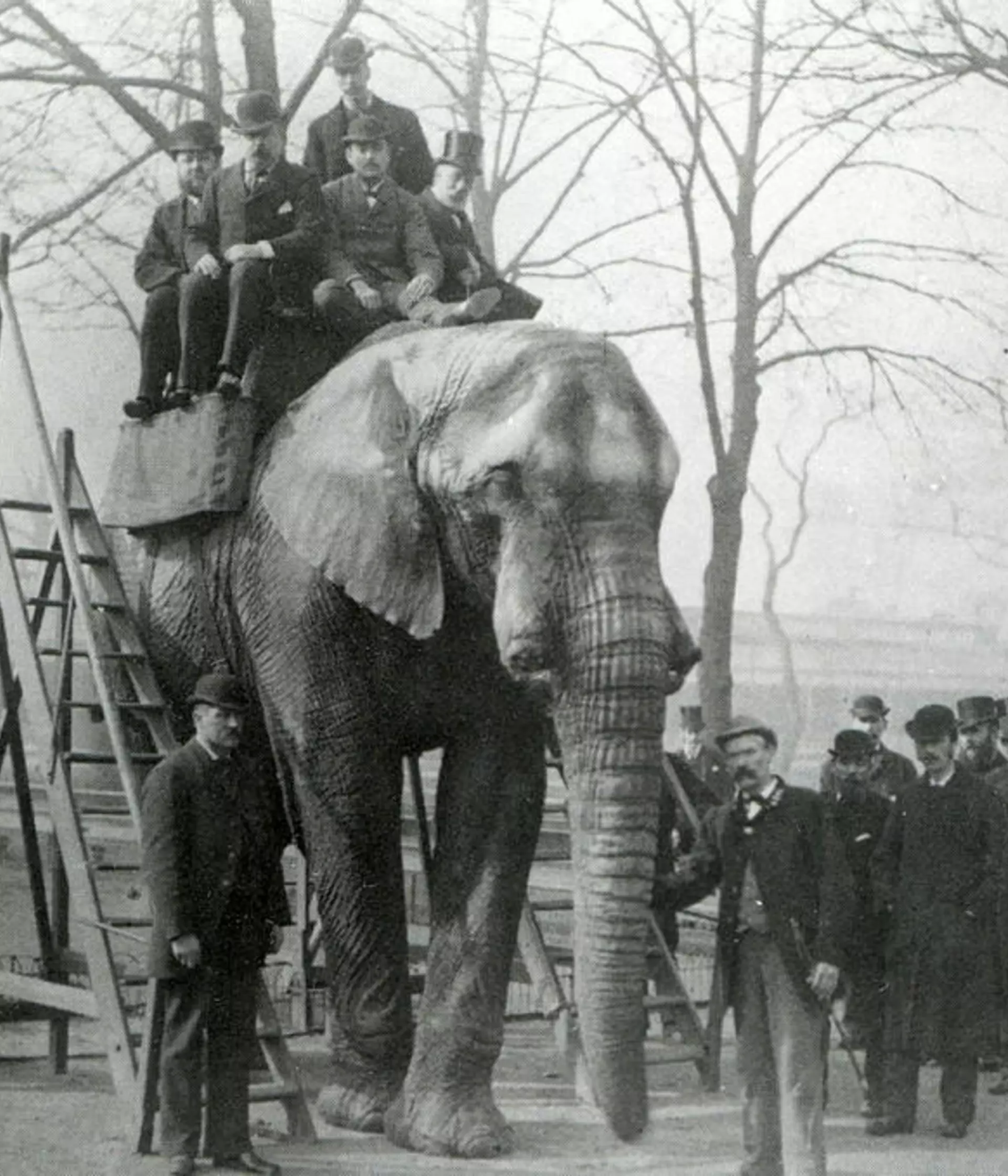Sir David Attenborough spent time in the ZSL library to explore the life of Jumbo in the BBC documentary, Attenborough and the giant elephant.
Jumbo elephant
On the 26 June 1865, a small male elephant arrived at London Zoo. Known as Jumbo, he was the Zoo’s very first African elephant, and went on to become one of the largest elephants that many had ever seen, as well as a key part of our history. His legacy remains to this day, with the word jumbo commonly referring to things of large size.
Jumbo was born in East Africa around 1860, and whilst still very small arrived at the Jardin des Plantes, Paris. He was transferred to London Zoo in 1865, and put under the care of keeper Matthew Scott, although he was in very poor health upon his arrival. Scott describes in his autobiography how he had “never seen an animal more woebegone”, as Jumbo was covered in sores and his feet had grown badly out of shape. Under Scott’s care however, Jumbo soon recovered to full health, and began to grow to the great size for which he was famed.
Jumbo becomes famous
Jumbo became a firm favourite with the public, in large part due to his role in the elephant rides offered around the Zoo at the time. He remained under the care of Scott, with whom it has been described he shared a uniquely close bond. Scott would sleep in the elephant house with Jumbo to keep him company at night, and once described himself as looking after him with all the “care and affection of a mother”.
As he grew older however, Jumbo’s behaviour began to change. Though he remained calm during his daily walks around the Zoo, at night he became increasingly aggressive and violent, cracking the doors of his house and in one instance actually breaking off his tusks. It was thought at the time that this could have been due to him entering musth, a period of aggression seen in bull elephants due to a rise in reproductive hormones. Now however, it is thought his aggression most likely stemmed from toothache, caused in part by the diet of sticky buns fed to him by visitors to the Zoo.
This fact was revealed in the BBC’s research for the new documentary, Attenborough and the Giant Elephant. With a team of scientists, Sir David examined the bones of Jumbo, still stored at the American Museum of Natural History, and found his teeth to be greatly misshapen.
Out of the blue during this period of troubling behaviour, an offer came from P.T. Barnum to buy Jumbo for £2,000 (equivalent to around £220,800 today), which the Zoo accepted. Despite the public outcry, Jumbo left the Zoo, accompanied by Matthew Scott, on 22 March in 1882, travelling across the Atlantic to join the Barnum & Bailey Circus in the U.S.
Jumbo and Scott travelled across North America with the circus until 1885, when his life tragically ended in a railway accident in Ontario, Canada. After being hit by an unscheduled freight train as he was led along the track back to his carriage, Jumbo died on the 15 September, with his trunk holding onto Scott’s hand.
Elephant care today
Since Jumbo’s lifetime, general understanding of animal welfare and care has changed a huge amount. As an organisation we have striven to be at the leading edge of this change, to ensure the best possible lives for the animals in our care, which live very different lives than they did 150 years ago.
There are no longer elephants at London Zoo, but a herd lives at our sister Zoo Whipsnade, which is the biggest Zoo in the UK. This herd of elephants live in the newly built Centre for Elephant Care, which was custom built to provide the perfect home for the breeding group. It is fitted out with a host of elephant-friendly features, including metre-deep soft sand flooring for maximum comfort and is set amid 30 acres of rolling paddocks.
The group are part of the European Endangered Species Breeding Programme for Asian elephants, which are classified as endangered on the IUCN Red List of Threatened species, meaning there is particularly urgent need for conservation action. ZSL is also working in Thailand – a major stronghold for Asian elephants – to reduce human-wildlife conflict and ensure the continued existence of the species.
Elephant dental care these days is also vastly different, with specialist dentists visiting regularly to check our herd’s molars. We also have an animal nutritionist on our staff, who ensures that each animal at ZSL has a specifically designed diet, providing all the nutrients they need.
